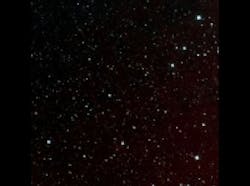NASA’s asteroid hunting spacecraft transmits first post-reactivation images
NASA’s Near-Earth Object Wide-field Infrared Survey Explorer (NEOWISE) spacecraft was launched in 2009 with the mission of creating infrared images of 99% of the sky September, NEOWISE was reactivated, following a period of 31 months in hibernation when its transmitter turned off, with a new initiative of identifying potentially hazardous near-Earth objects, including asteroids and comets. More than three months later, the first images captured by the spacecraft have been transmitted.
In its prime mission in 2010 and 2011, NEOWISE (then called WISE) discovered more than 34,000 asteroids and characterized 158,000 throughout the solar system. It was also responsible for discovering the first Y Dwarf and the Earth trojan asteroid. In addition to discovering near-Earth objects, NEOWISE can assist in characterizing previously detected asteroids that could be potential targets for future exploration missions, according to NASA.
NEOWISE’s imaging components include a 16" telescope and four infrared detectors containing 1,032,256 pixels each all kept cold inside an outer cylindrical, vacuum-tight tank filled with frozen hydrogen called a cryostat. The telescope is designed to continuously image broad swaths of sky at four infrared wavelengths: 3.4 µm, 4.6 µm, 12 µm, and 22 µm. The telescope was built by L-3 SSG-Tinsley and utilizes a total of 10 curved and two flat mirrors made of aluminum and coated in gold to improve their ability to reflect infrared light.
The light gathered by the telescope is focused onto a focal plane, which consists of four infrared detector arrays, one for each infrared wavelength observed by WISE. The 3.4 µm and 4.6 µm detectors convert light to electrons using an alloy made of mercury, cadmium, and tellurium. The electrons from each of the pixels are measured every 1.1 seconds, and the result is sent to the instrument’s electronics system. These detectors were manufactured by Teledyne Imaging Systems.
Page 1 | Page 2
About the Author

James Carroll
Former VSD Editor James Carroll joined the team 2013. Carroll covered machine vision and imaging from numerous angles, including application stories, industry news, market updates, and new products. In addition to writing and editing articles, Carroll managed the Innovators Awards program and webcasts.

